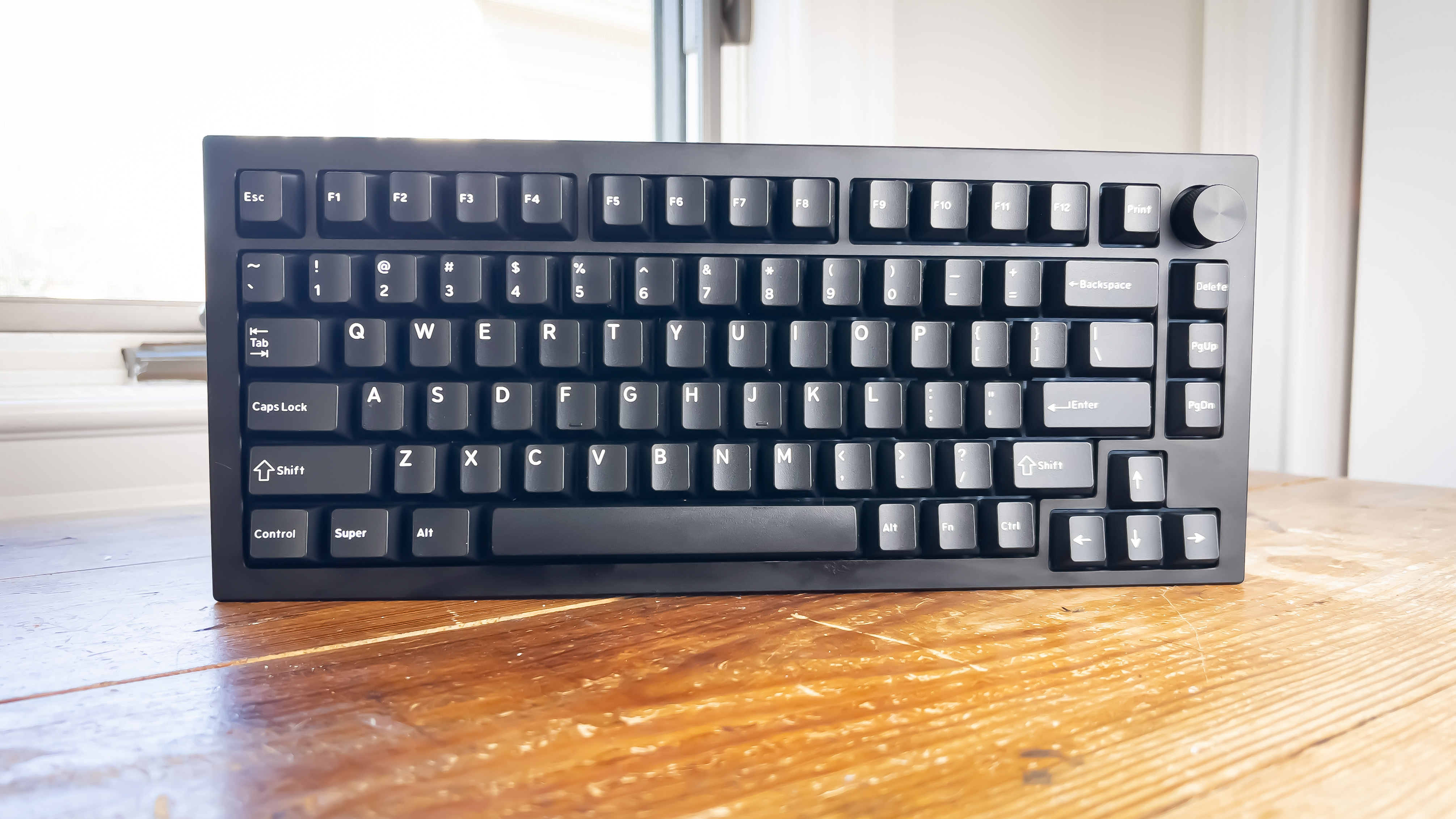
One of the biggest names in the mechanical keyboard realm, Drop (formerly known as Mass Drop) has been selling mechanical keyboard parts for years, so you might assume its newest pre-built board, the Sense75, would be a stand-out option.
But while its Holy Panda X switches and DCX-profile keycaps are indeed great, the Sense75 sets itself apart from the competition at least as much for what could be improved (and should be at this price) as it does for what it gets right.

That's not to say there's anything wrong with the specs (on paper, anyway) of the Sense75. It's a gasket-mounted 75 percent mechanical keyboard that comes pre-built with Drop’s DCX keycaps, Phantom stabilizers, and Holy Panda X switches. It comes in two colorways, “Nightfall” (black), and “Polar” (white), which are priced at $350 and $399, respectively — at that price it’s certainly not going to land a spot on our list of the best budget mechanical keyboards.
Design of the Drop Sense75
The Sense75 is a gasket-mounted mechanical keyboard featuring a 75 percent layout, which is basically a squished TKL — it has one column of navigation keys instead of three, and four fewer keys in total. The board is smaller than a TKL, measuring 13 inches (330.2mm) long by 5.6 inches (142.2mm) wide by 1.2 inches (30.5mm) high. These are basically the same measurements as the Keychron Q1 (12.9 x 5.7 x 1.4 inches / 327.5 x 145 x 34.8mm). The Sense 75 weighs 3.1 pounds (1,406g) fully assembled, which is a little lighter than the 3.5lb (1,600g) Q1.
The Sense75 comes with Drop’s DCX keycaps, Phantom stabilizers and Holy Panda X switches. The DCX keycaps are fantastic (I have a set on my KBDFans Tiger80), but more on those later. The Phantom stabilizers are plate-mounted and rattle a ton by default. The Holy Panda X switches are manufactured by Gateron and feature a heavy tactile bump.
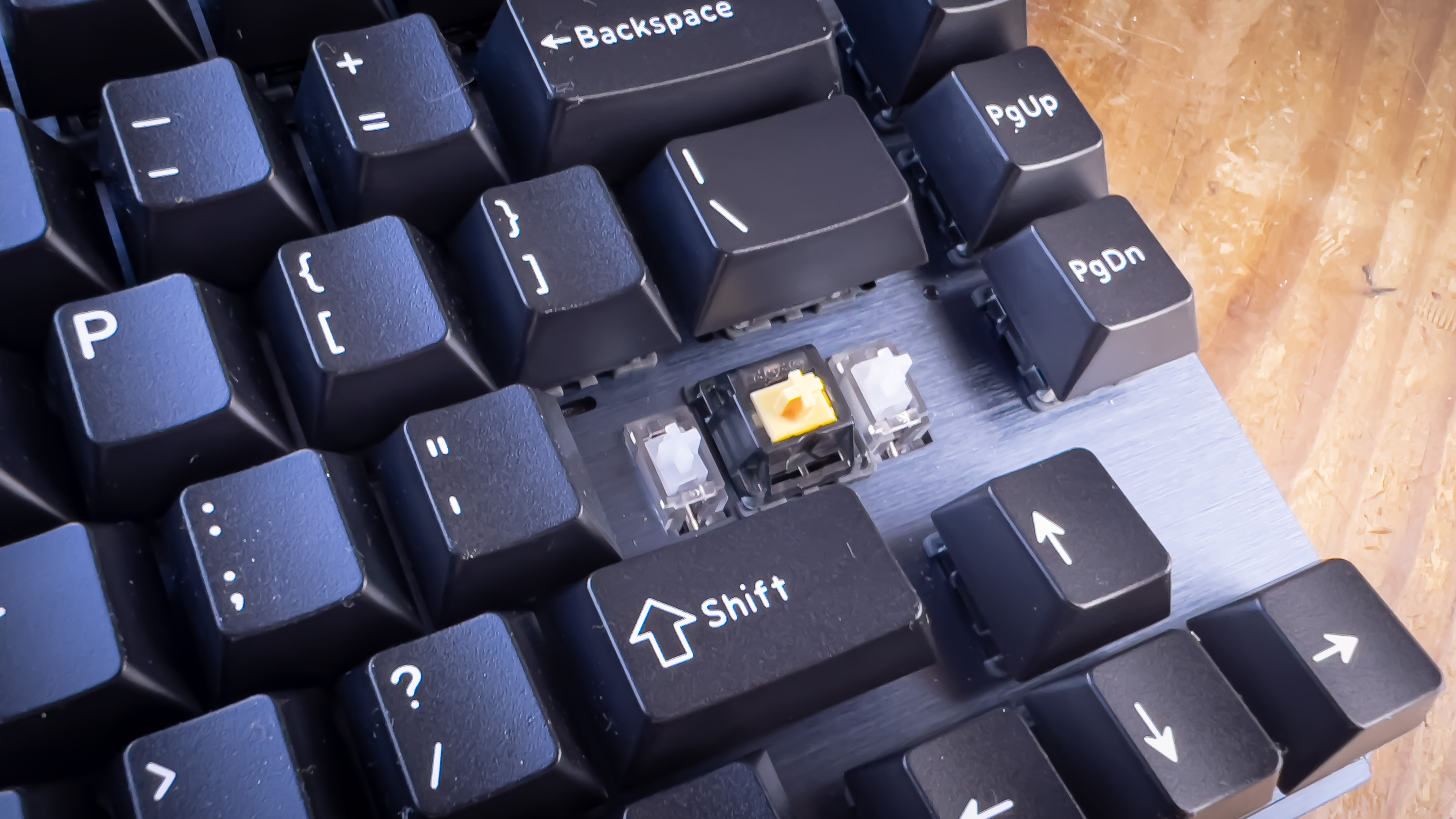
This might sound pretty good so far, but the performance of the Sense75 is poor for something this expensive. Instead of using poron foam pads, Drop uses a “specialized elastopolymer” called BISCO. I have no idea what this is, but the implementation... stinks. Drop teased us by making the BISCO pads too thin, compared to the poron counterpart. Inside the chassis, you’ll find EVA foam, which isn’t out of the ordinary — but it doesn’t do a good job of dampening noise; this board pings a lot. I was surprised by how much pinging there was, because the Sense75 even has an aluminum weight built into the bottom case to dampen some of the sound.
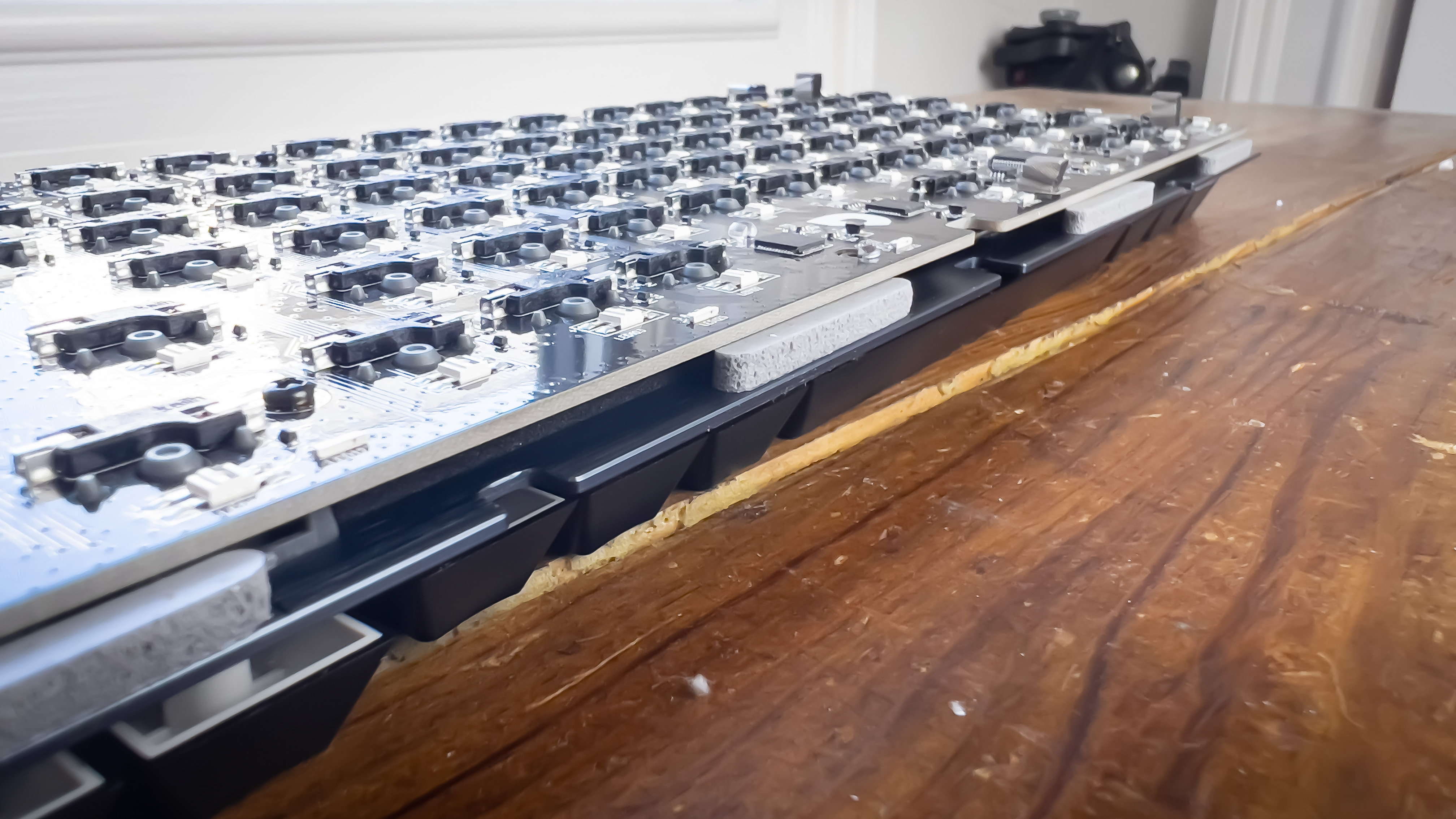
That's not to say there's nothing great here, because there is — like the Sense75's 6000 series aircraft-grade aluminum chassis, Alps rotary encoder, per-key RGB, QMK/VIA and VIAL support, and south-facing RGB for proper Cherry-profile keycap compatibility. In addition to per-key RGB, the Sense75 also features edge lighting for extra flash and flair.
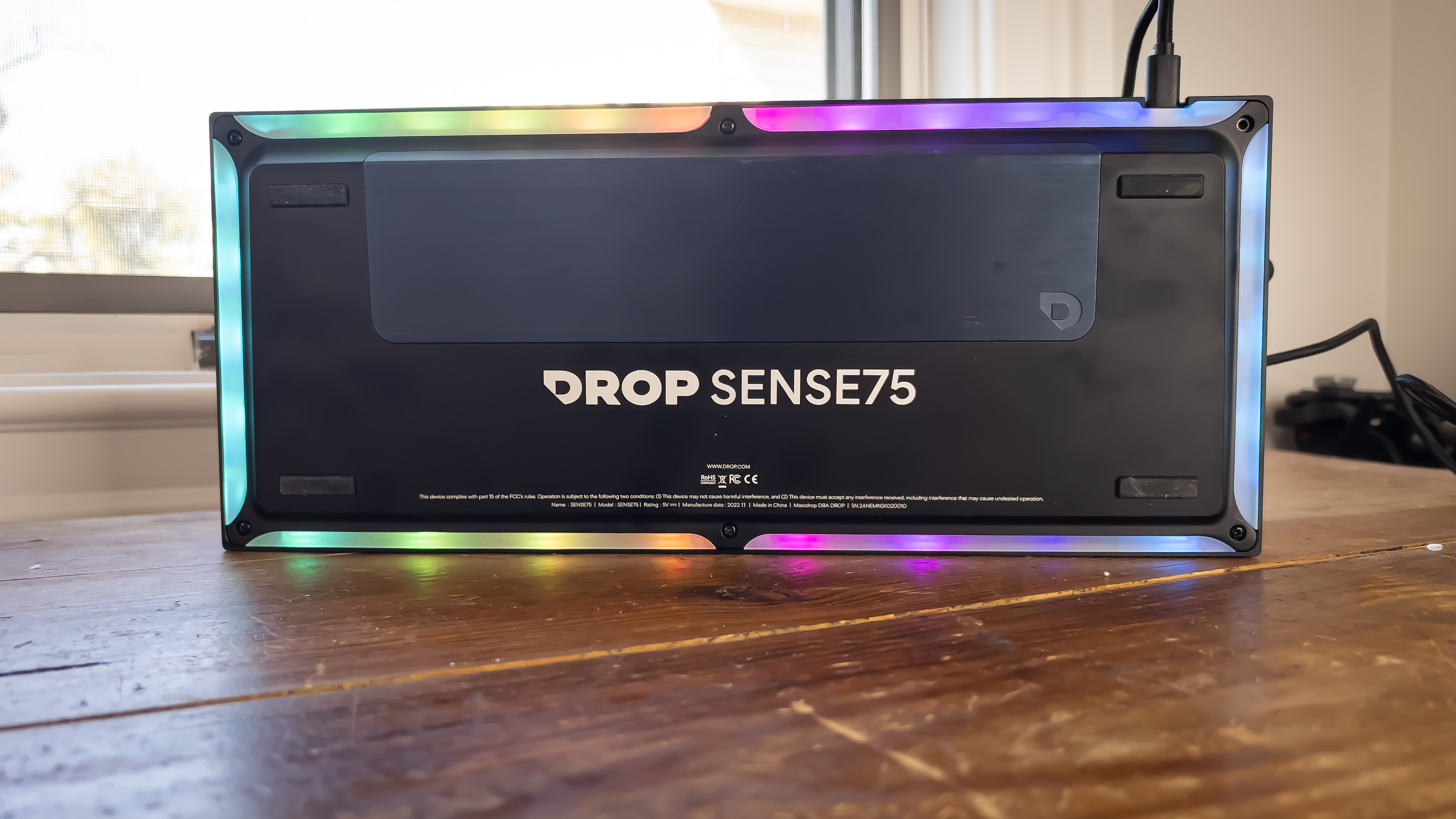
The finish of the Sense75 is top-tier, but the design is underwhelming — it’s very similar to the Glorious GMMK Pro (another gasket-mount 75 percent keyboard with RGB accents). Sorry, Drop — but the RGB is way too similar. I also don’t love the USB-C port, which is located on the left side of the board. I would have liked to see left and right USB-C ports, which is what Drop’s Carina sports.
Specs of the Drop Sense75
Typing and Gaming Experience on the Drop Sense75
The 75 percent layout is somewhat odd as keyboard sizes go — it’s almost a TKL, but not quite. That said, I don’t mind it as it works pretty well if you don’t need a numpad.
I didn't enjoy the typing experience on the Sense75 as much as I expected to, considering its price and its gasket-mounted design. The keyboard has zero flex — it again reminded me of the Glorious GMMK Pro. I only tested the aluminum plate model of the Sense75, but I can’t imagine the brass, POM, carbon fiber, or FR4 plates making a big difference.
And on some surfaces that weren't completely flat and solid, the board had a tendency to rock back and forth when you use the arrow keys. That wasn't an issue when I used the keyboard at my kitchen counter, but it was an annoyance when typing and gaming at my desk, which has a paper desk calendar on it.
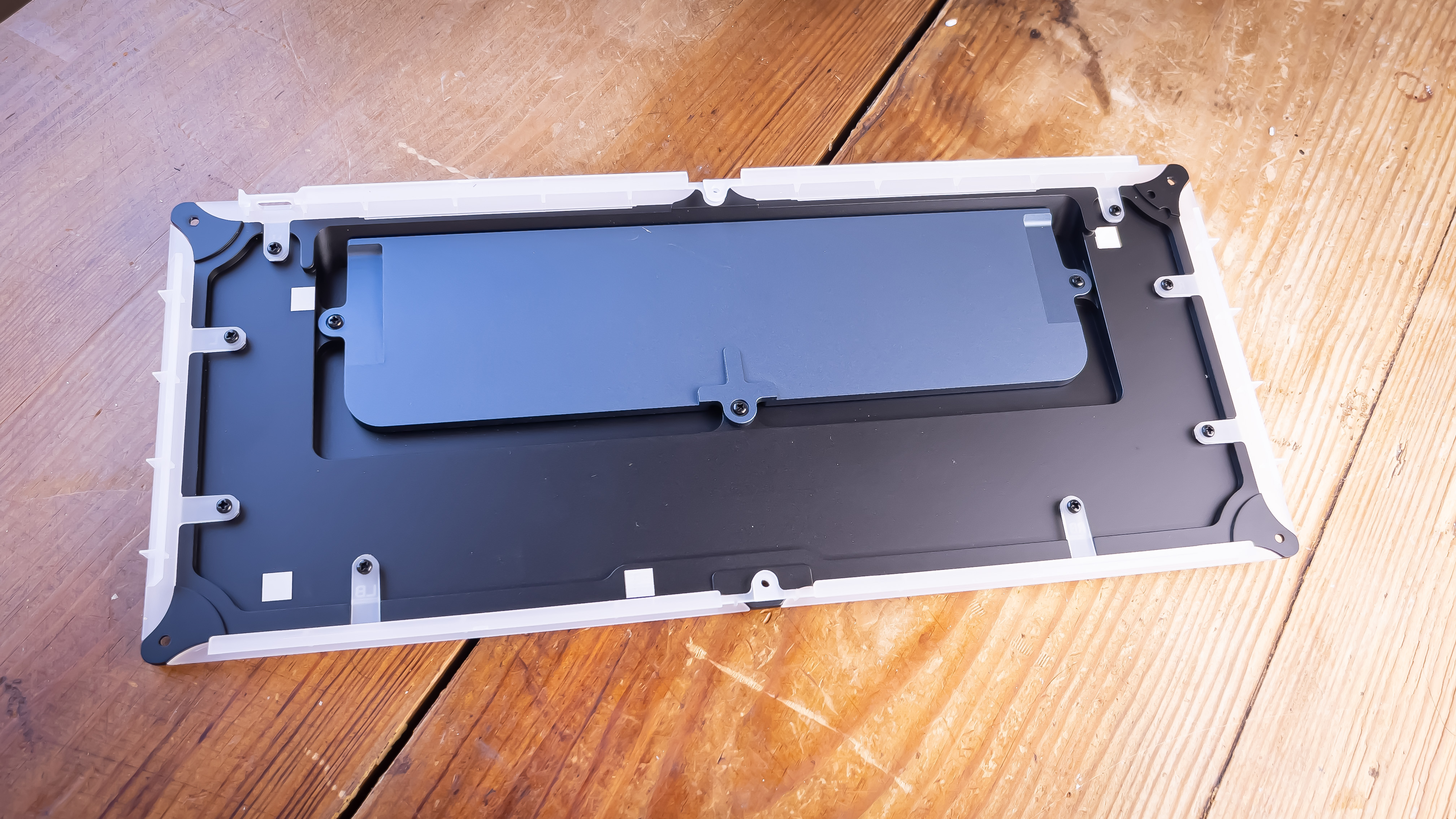
Lack of flex aside, Drop’s Holy Panda X switches are very enjoyable to use. They have a nice actuation weight of 60g and a tactile bump on the way down. I do recommend that you lube these switches, though, because they feel and sound very dry out of the box — but they are tactile, so the scratch is somewhat justifiable.
The DCX keycaps are by far my favorite aspect of this board — but then DCX is my favorite keycap profile. The feel is almost identical to Cherry profile, but these feel just a little better — and the double-shot legends are stunning. DCX keycaps are more affordable ($99) than their GMK counterparts, and Drop is constantly adding new colors. It's a shame, though, that the Sense75 only comes with either black or white colorways.
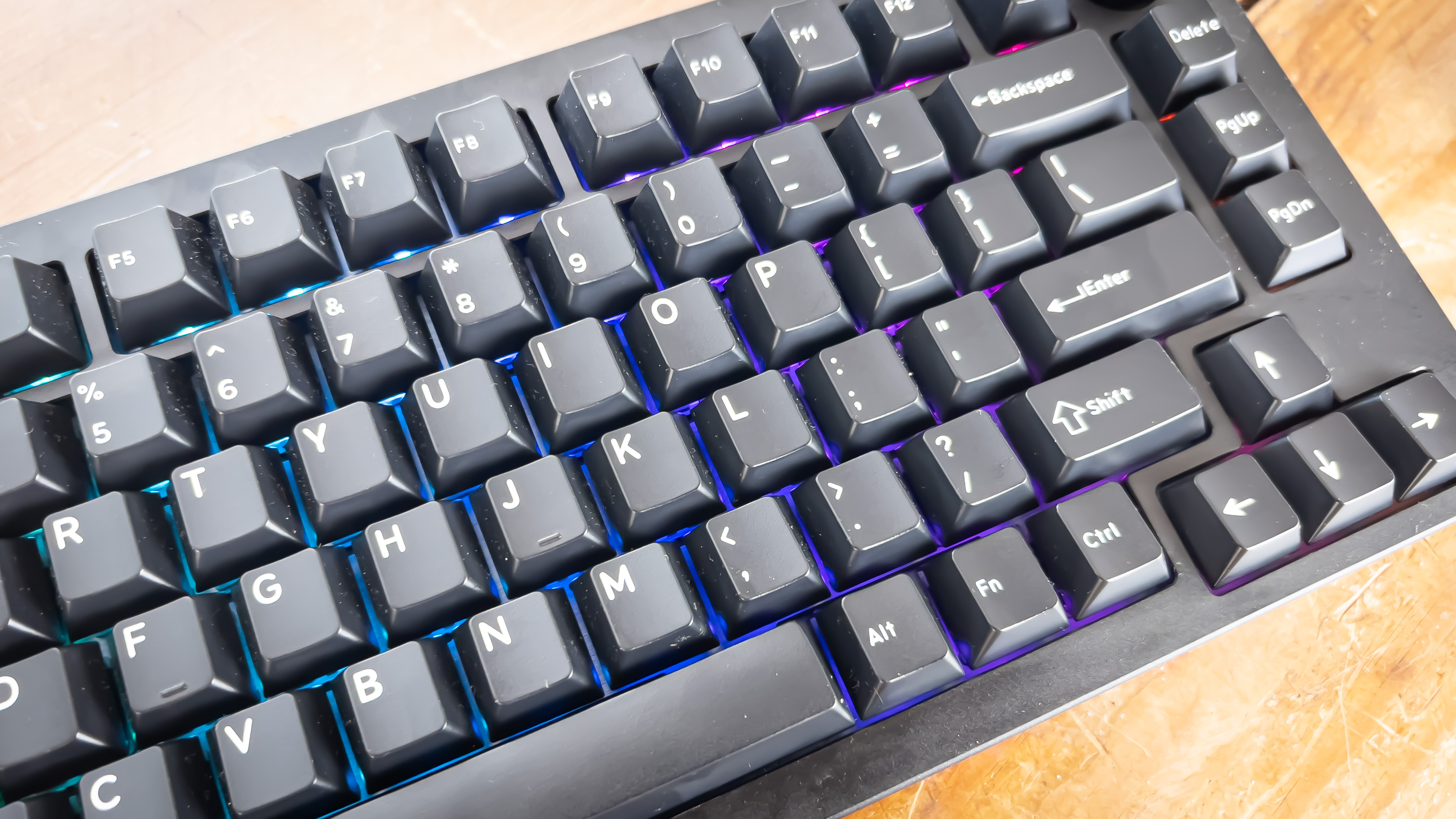
The recent release of Sons of the Forest has had me glued to my PC for more hours of the day than I’d like to admit. I wouldn’t recommend this board for fast-paced FPS games due to the hefty tactile switches, but it’s fine for casual gaming.
Software for the Drop Sense75
Drop includes support for QMK/VIA, which are key mapping softwares that enthusiasts swear by, thanks to the freedom of customization. But there’s a catch — the board must be flashed using QMK Toolbox before it will work in VIA. While Drop lays out the instructions on how to do this nicely, it really feels like a board with this price tag should come pre-flashed.
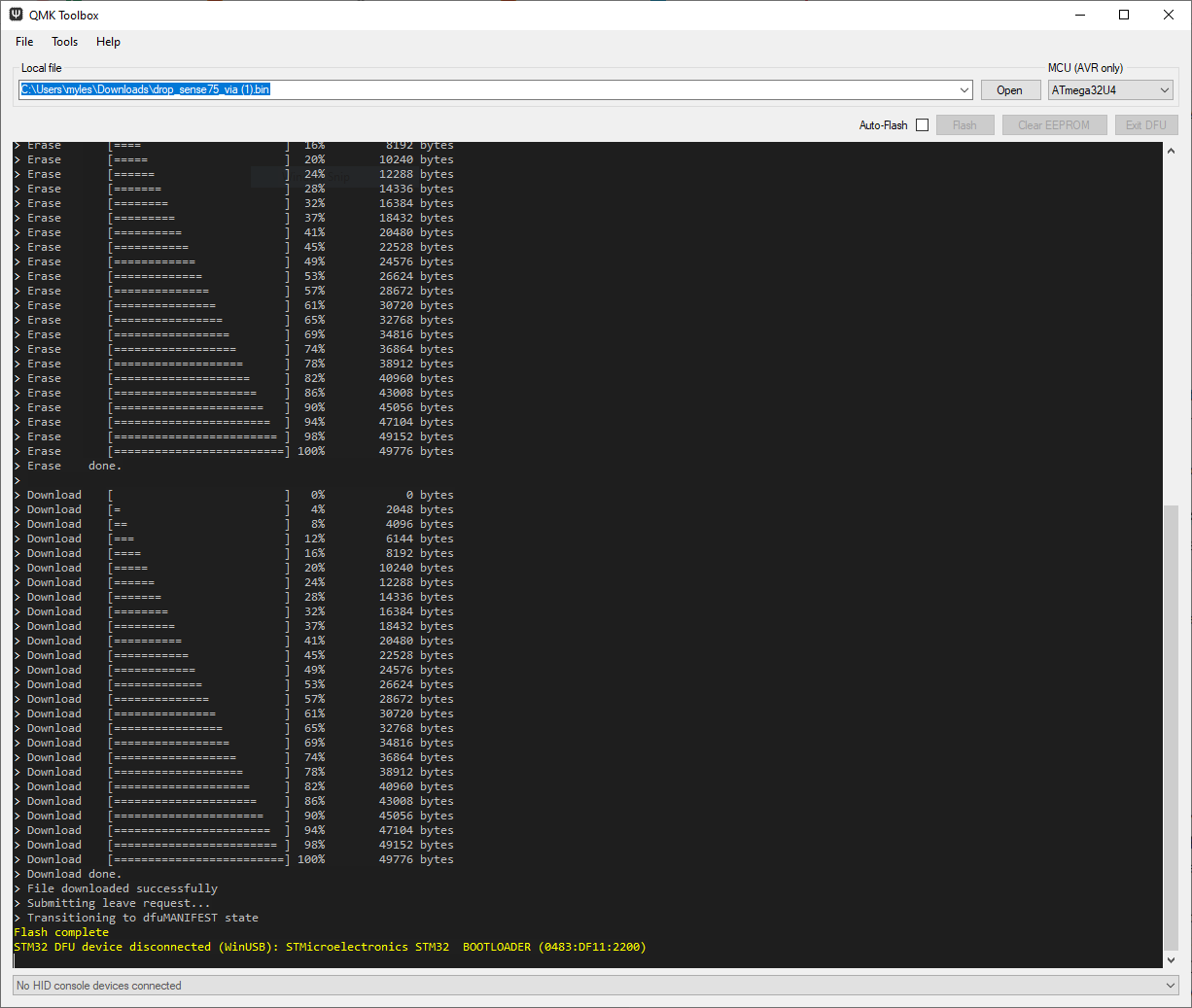
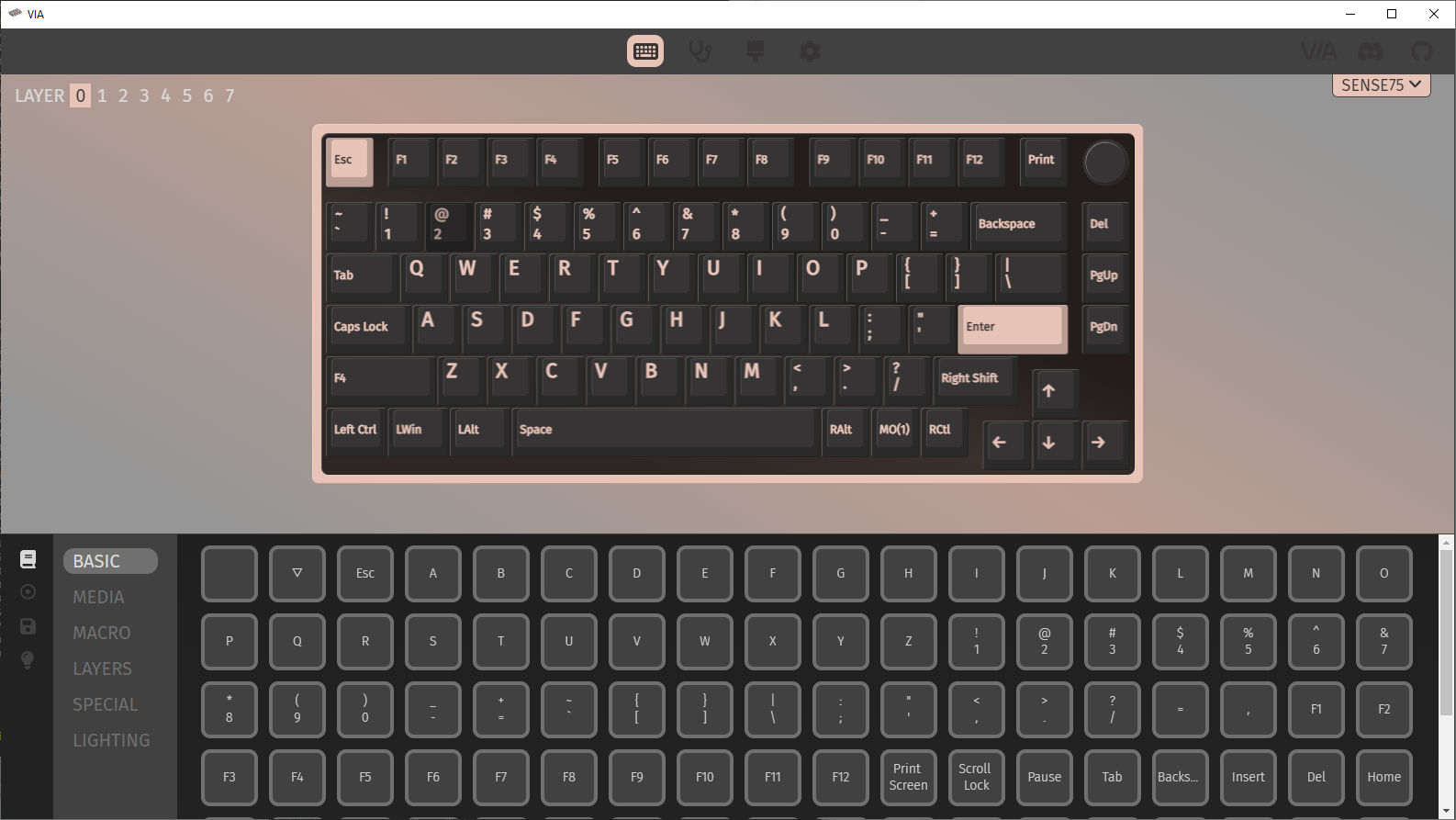
The Sense75 comes with enough memory to house eight layers, which is almost twice what you’ll find on many other mechanical keyboards.
My full-time job requires a lot of data entry and Microsoft Excel use, so I remapped the left shift key to F4 (highlight shortcut in Excel). Because I have PgUp and PgDn set to control the volume on my daily driver, I opted to use the rotary knob on the Sense75 to control the RGB brightness.
Overall, supporting QMK/VIA is a step forward for Drop, but I shouldn’t need to flash a $350+ keyboard on my own — even if the instructions are easy to follow.
Bottom Line
It’s difficult to recommend the Drop Sense75, given its price and all of the other options on the market. The finish on the Sense 75 is excellent — it has great, high-quality keycaps and pleasing tactile switches. But Drop drops the ball on its sound dampening material by using thin BISCO pads instead of poron foam, and the result is a pingy, rattly mess. The board has zero flex, and supports QMK/VIA but requires that you flash it using the QMK Toolbox first.
These flaws might be forgivable if the Sense75 didn’t cost a whopping $350-plus. But you can pick up the Keychron Q1, a similarly-sized 75% mechanical keyboard, for less than $190 fully-assembled (or $160 barebones). Going that route instead of the Sense75 would leave you $150-plus for keycaps and switches (or even a whole other keyboard). Another pre-built 75 percent mechanical keyboard worth checking out is the iQunix ZX75, which starts at $195 and tops out at $225 — That's still over $100 cheaper than the Drop Sense75.
MORE: Best Gaming Keyboards
MORE: How to Pick Keycaps for Your Mechanical Keyboard
MORE: Best Wireless Keyboards






